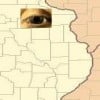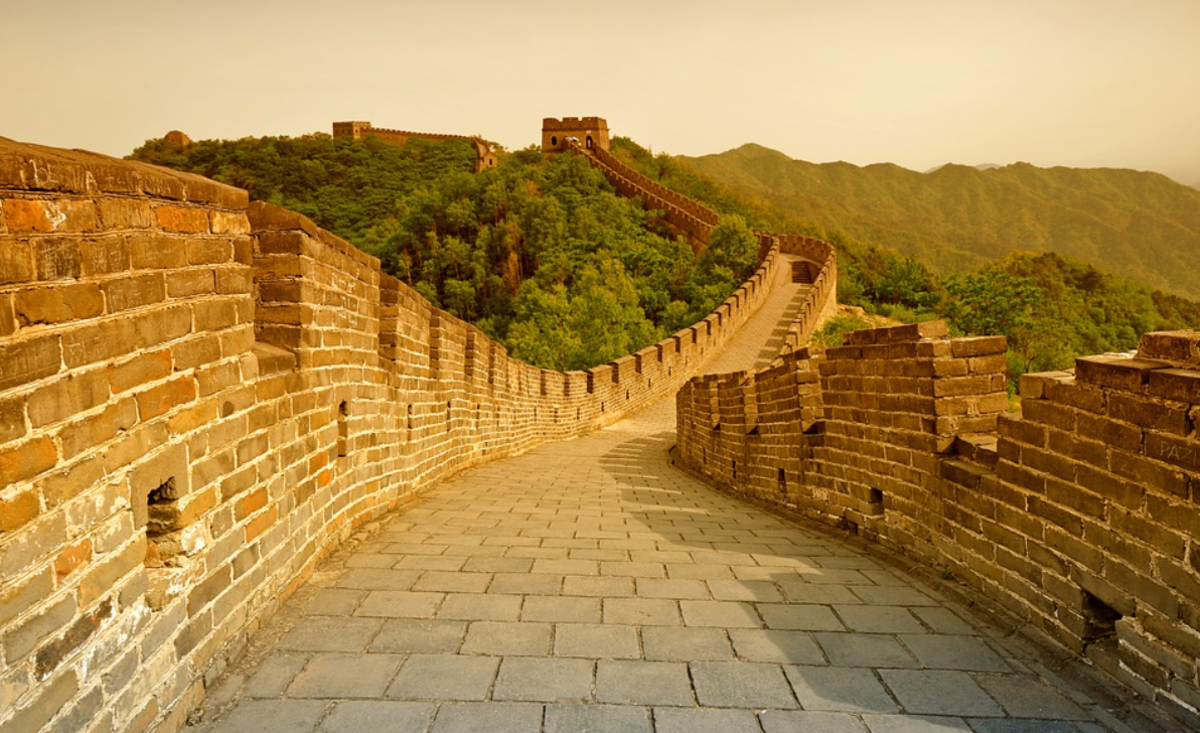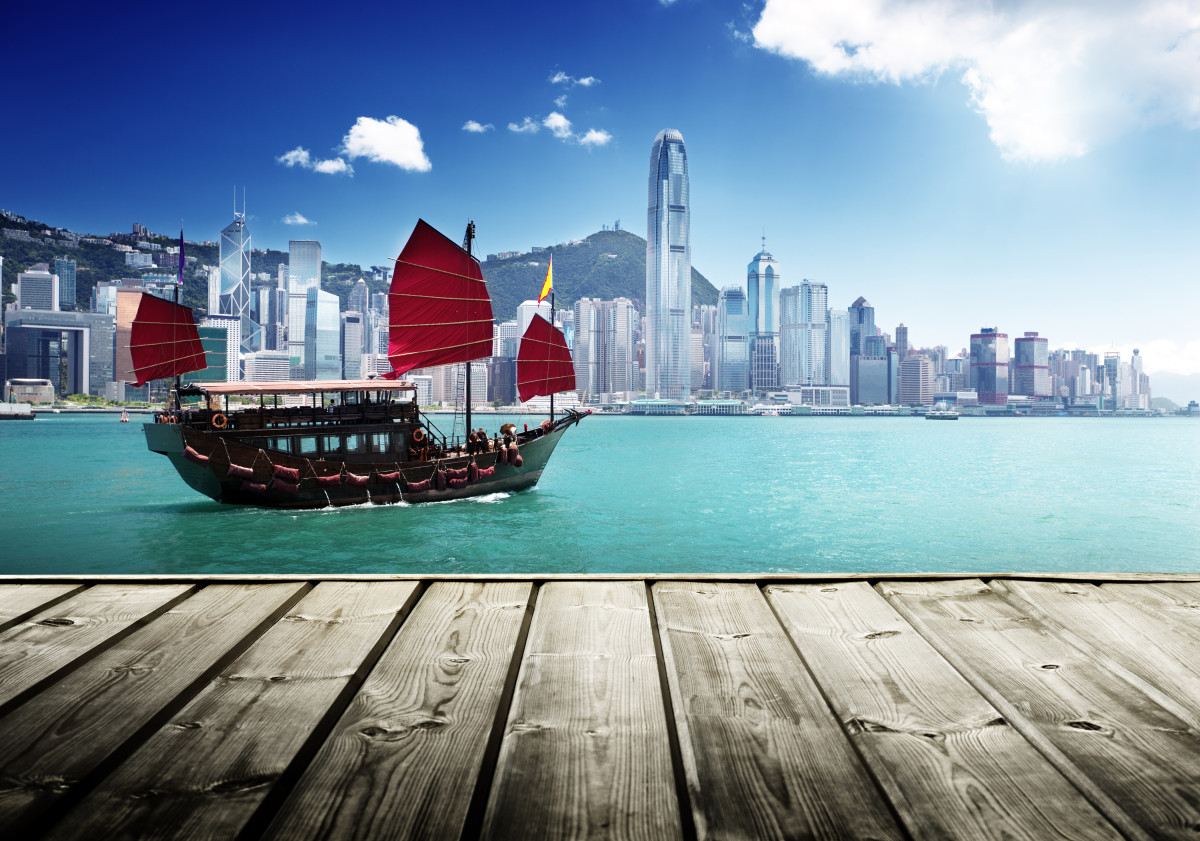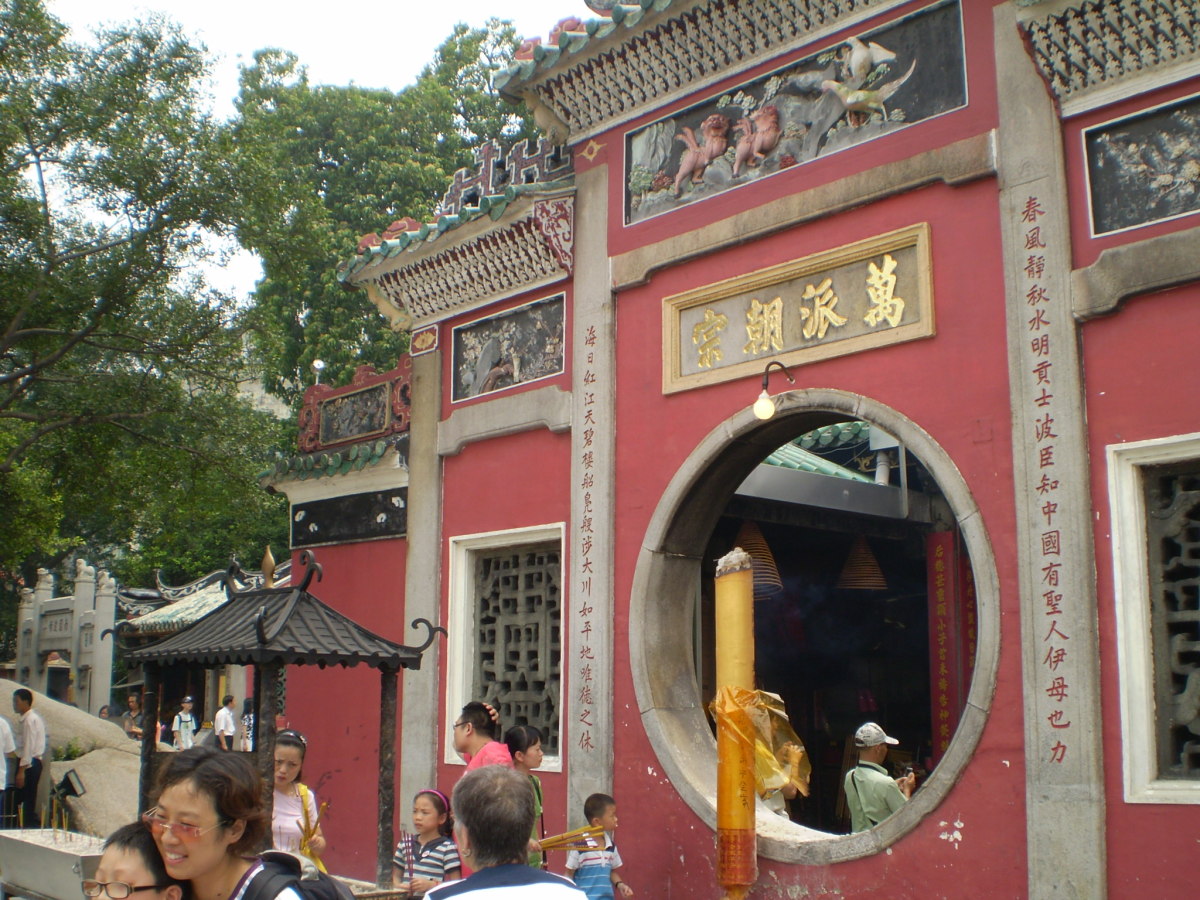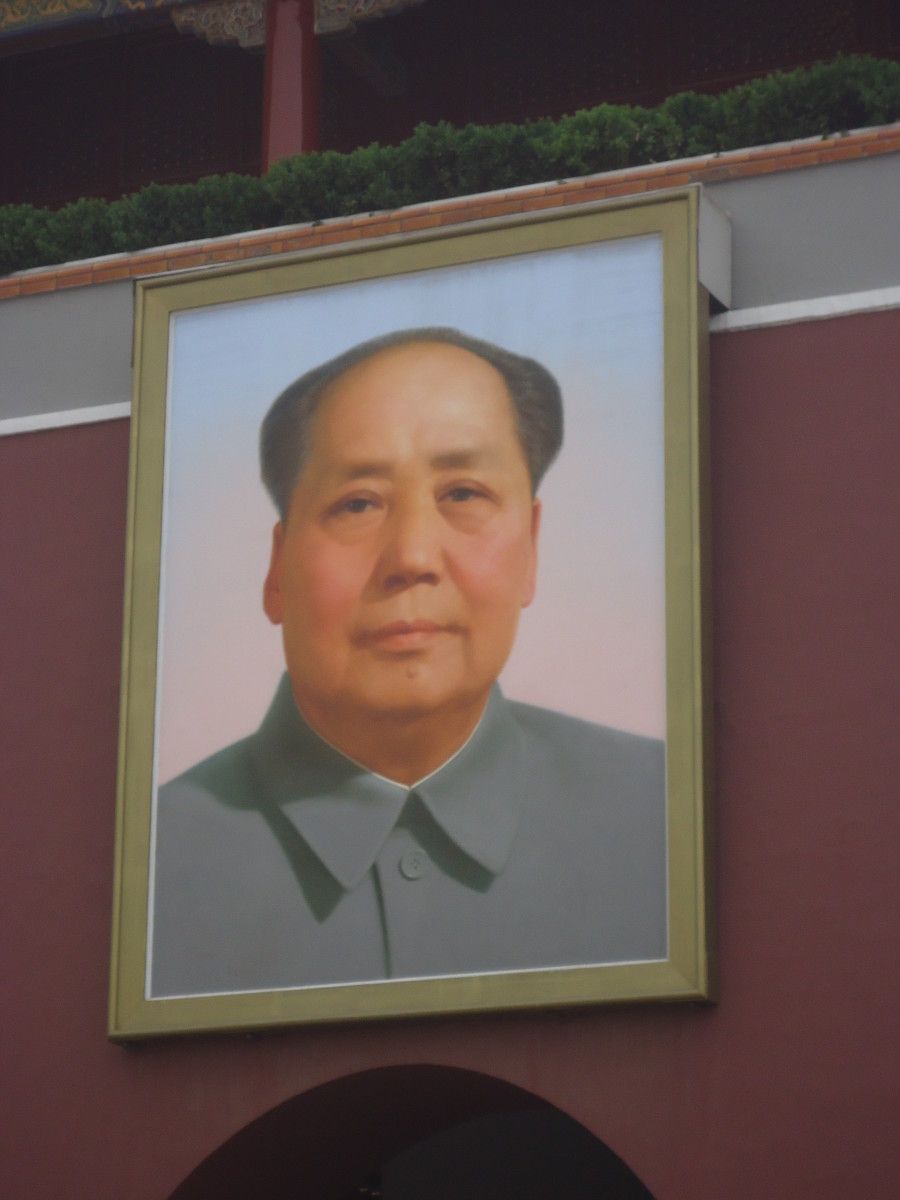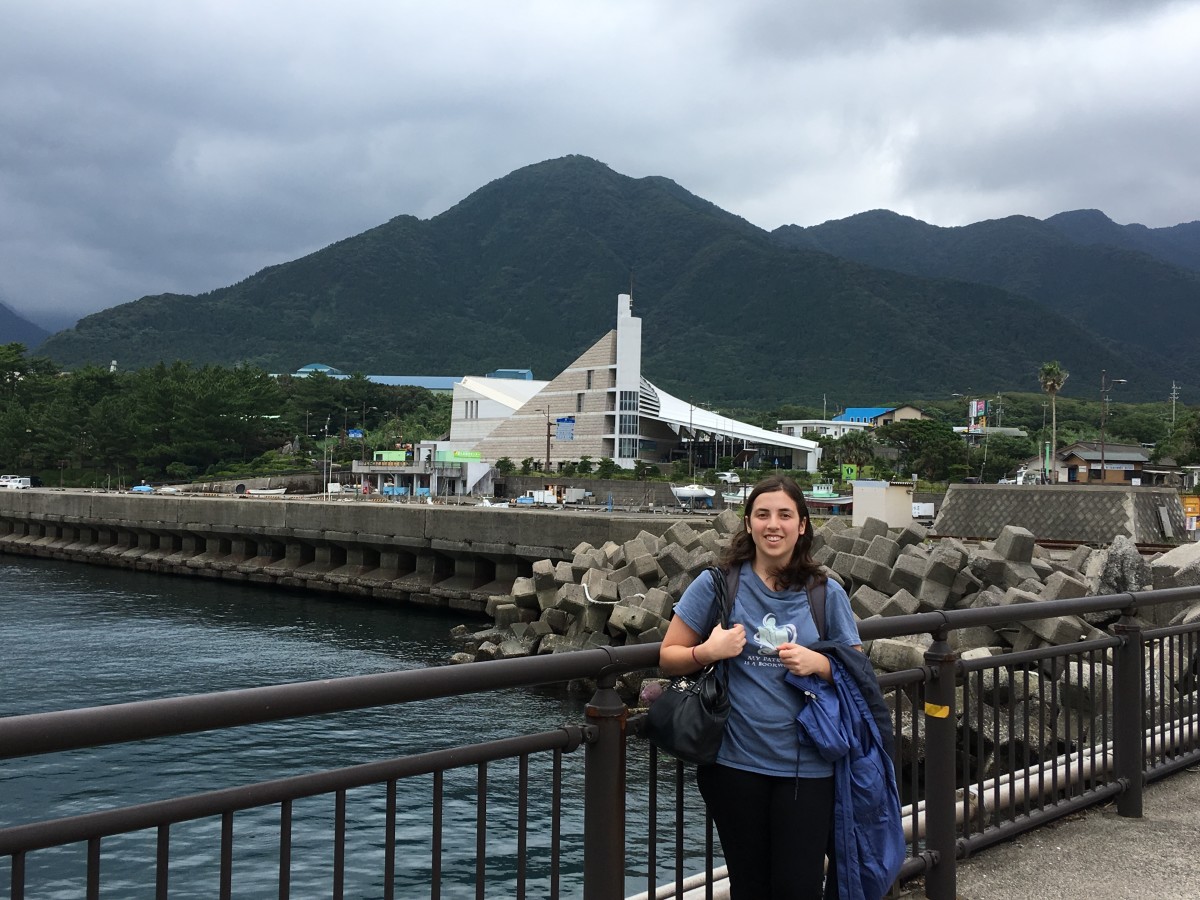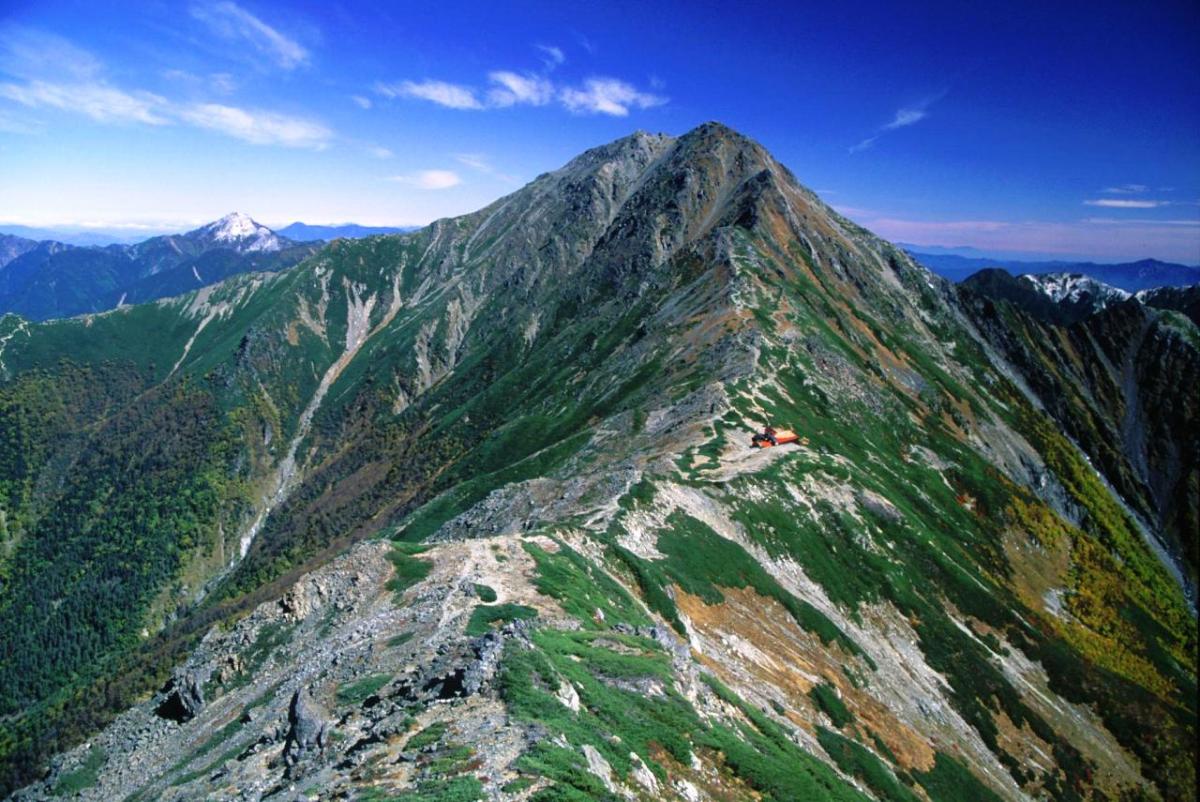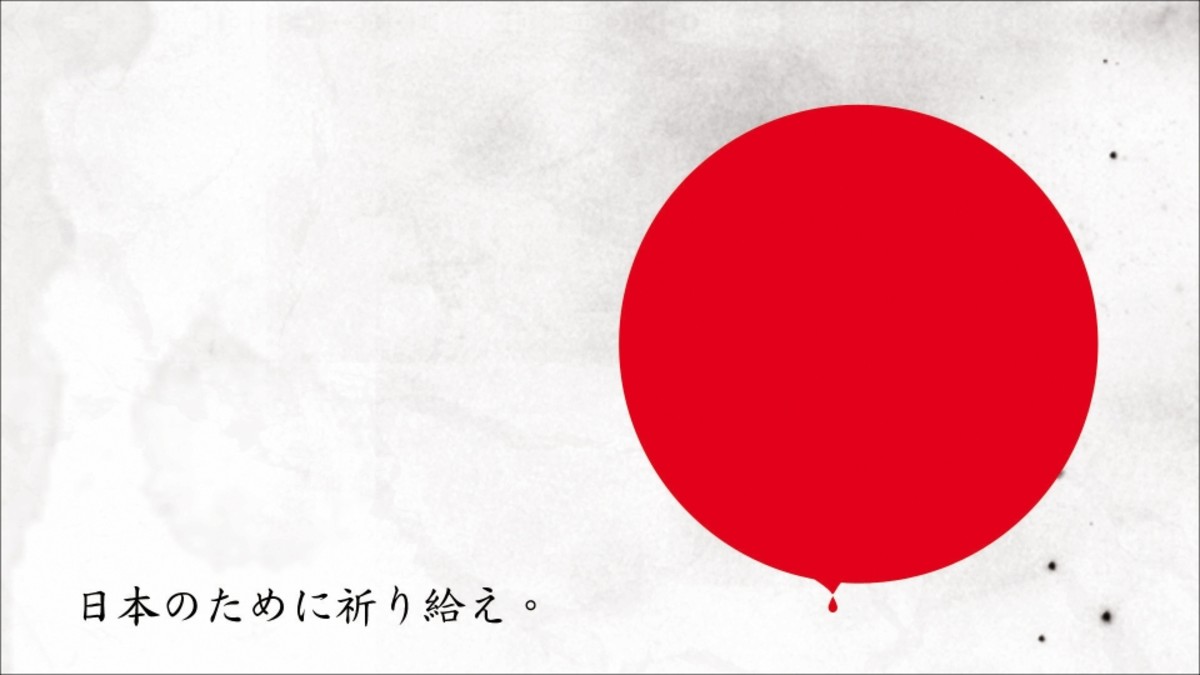Travel - China Quartet (Cities) 1
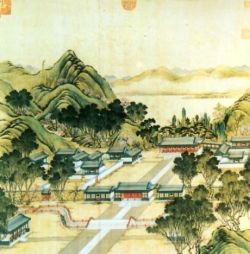
Four big ones: Beijing, Shanghai, Tianjin, Chongqing
These are almost like separate countries, rather than mere cities, within the nation known as the People's Republic of China. Each has a certain self-contained presence, and this impression is mainly due to their size, comparable to some countries in Europe.
They are all large not only in population but in history and in places to see.
The history, in fact, is overwhelmed by the shiny new places to see, to which, moreover, the Chinese themselves pay a lot more attention these days than they do to the history. Having a long past doesn't mean you can't keep your eye on the present and the future.
The point of our travel series is to whet your appetite, not to compete with Lonely Planet or Frommer. So let's press forward.
China Travel - Quartet of Cities #1: Beijing, Shanghai, Tianjin, Chongqing
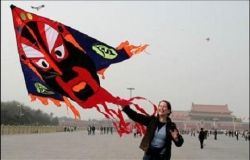
Beijing
A good way to start (or end) exploration of modern Beijing is to visit Confucius. Or rather the temple built to honor him by the 13th century emperors. A peaceful courtyard with pine and cypress trees and relatively few tourists -- welcome in this busy city of 17 million people. On either side of Great Accomplishment Gate are stone drums, carved about 1750. Not far from Confucius Temple is Lama Temple, representing Buddhism which a thousand years after Confucius died made inroads into China, had a good run, but then was largely rejected in favor of Neo-Confucianism.
The huge portrait of Chairman Mao at the north end of Tiananmen Square, at the center of things, keeps an eye on the public square which in 1958 he made the largest in the world. Atop the Gate of Heavenly Peace in 1949 he proclaimed his victory over Chiang Kai-shek, and today the portrait looks out also at the Memorial Hall where his body can be seen in its crystal coffin. The Great Hall of the People, where the National People's Congress meets, faces the National Museum to the east. At the southern end there is Zhengyangmen Gate.
Under the portrait and through the Gate of Heavenly Peace is the Forbidden City, today easier to see than to write a paragraph about. There are guided tours and self-guided tours. The latter are headsets with recorded guidance; that in English has been provided, amusingly, by Roger Moore, James Bond #2. Most of the tour deals with the palace gates, the throne rooms, and the living quarters of the imperial family -- now trod over, in large numbers, by mere mortals. You then exit the northern gate. Most guidebooks recommend crossing the street and going into Jingshan Park for a climb up to Pavilion of Everlasting Spring and a panoramic view.
Alternatively, directly west from the Gate of Heavenly Peace is the gate into Tai Miao, the Imperial Ancestral Temple, which is terribly authentic and much less touristed. Some have gone so far as to describe Tai Miao as "hidden in plain sight." Further east from Tai Miao South Gate, around the corner from Tiananmen Square, is the Park of the Peoples Culture which parallels East Eternal Peace Avenue and is hidden out of view behind large red walls. The park was originally part of the Imperial City and Palace. Along East Eternal Peace Avenue is the entrance to the NW subway station, Tianamen Dong Station.
Many major cities had Drum and Bell towers like the ones that still exist in Beijing, ancient Chinese versions in some ways of London's Big Ben. Beijing's Drum Tower and has 24 drums, now drummed for tourists each half-hour, 9-11.30 in the morning and 2-5 in the afternoon. The Bell Tower, brick to Drum's wood, dates from 1747. These are in an older, less-touristed area of the city. Both provide views of traditional alleys (hutongs) down below.
Summer Palace. A lovely complex of palaces and gardens dating to 1707 NW of the walls of Beijing and outside Qinghua University. This is where the emperors actually resided and handled government affairs, using the Forbidden City only for formal ceremonies. A retreat from the summer heat, its palaces were famously burned by Lord Elgin in 1860 during the Second Opium War in retaliation for the torture and execution of twenty Westerners. Elgin maintained that the emperor had sanctioned these killings. In 1900, whatever buildings had survived or had been restored were burnt for good by Western soldiers sent to quell the Boxer Rebellion. Only in the 1980s was the site reclaimed as a historical site. Longevity Hill overlooks Kunming Lake; along the north shore is Long Corridor, a covered wooden walkway. In the Hall of Benevolent Longevity the evil Empress Dowager Cixi met her ministers, and she confined the Emperor in the Hall of Jade Ripples when he tried to modernize; then later she poisoned him. She also built a marble boat in the lake with the money needed to create a modern Chinese navy.
In a pre-industrial society, the harvest is everything. The Temple of Heaven, dating from 1406, and the rituals surrounding it constitute a formal implementation of that fact. For three days before the winter solstice the emperor eschewed meat and wine. Carried on a palanquin from the Forbidden City to the Temple, he spent the last night fasting in the complex's Hall of Abstinence. In the morning he proceeded to the Hall of Prayer for Good Harvests and, as the Son of Heaven, offered his prayers for a good growing season and a good harvest. In the center of the complex, the Hall of the Imperial Vault of Heaven stored the ceremonial tablets he used; it is surrounded by Echo Wall, where two people standing across from each other can hear each other whisper. The Circular Mound Altar of Heaven is where the emperor offered sacrifices. which were an important part of the ritual.
Most visitors to Beijing also take in the Great Wall, Ming Tombs, Qing Tombs, or Grand Canal -- or all of the above. Most are about twice as far away from the central district as is the airport, and all can be reached by public transportion rather than the more common tour bus. For example, you can take S trains from Beijing North Railway Station directly to Badaling Railway Station, about a 20-minute walk from Badaling Great Wall.
Not all is old, however, in this home city of the 2008 Olympics. The air pollution, worst in summer, is a tangible reminder that in fact the post-industrial dominates here. Sometimes the very modern is right inside the very old, as with Red Gate Gallery of modern art inside Dongbianmen Watchtower or One Moon Gallery inside a Ming era building in Ditan Park. But not always. 798 Dashanzi Art District is in a factory zone built with East German help, back in the days of Communist solidarity. You'll think you are in a trendy section of some European city -- or in Shanghai -- rather than in the capital of China. More likely to appeal to those who have lived in China for a while, perhaps, than to the tourist. But the 798 art district outdid even the Forbidden City as the most popular tourist destination, more than one and a half million visitors in a single year.
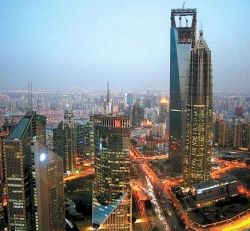
Shanghai
Just some thoughts that have been brought to mind by thinking of introducing the place to someone.
"Old" is the thought that comes to mind when you look at the Bund, the most famous part of Shanghai for the past hundred years.
Old?
How can anything be old in a city that really didn't get up a full head of steam until the late-19th century, maybe really the early 20th? -- and this in a country that has been around for five thousand years!
Of course, this is "old" not in the sense of "ancient," which is a commodity China has plenty of, but in a different sense that becomes apparent as you stroll along the Huangpu River, Shanghai side, on the Bund Promenade, with all the other tourists. Across the street the buildings you see there were occupied by the great entrepreneurial firms of final-Qing, early-Republic. But now look in the other direction, out across the river, across the Nanpu Bridge, and you will realize that what you have been looking at seems very old indeed compared to what you see now -- the Pudong New Area.
No revelation at all to say that Shanghai is into property development. Shanghai is, after all, a place that has grown from a fishing village into a city of 18 to 20 million people. As of 2005 it became one of the biggest shipping ports in the world, according to Asia Times. But a decade or so ago, as the 20th Century was giving way to the 21st, its Pudong New Area was merely a swampy area with decrepit factories. Today it is basically a whole new city -- prest-o, change-o -- filled with skyscrapers of the most modern design. They include that weird, bulbous Oriental Pearl TV Tower from the observation decks of which (there are several to choose from) you can get an overview, though on some days you may have to contend with some smog in your field of vision. (There's a good museum of the city in the basement of the tower, incidentally).
And Oriental Pearl is only one among a number of skyscrapers. With Pudong developers the words "world's tallest" are like a red flag to a bull. Jin Mao Tower, for example, came in not too long ago at 88 stories. It contains offices and a Grand Hyatt, starting on the 53rd floor. That made it the tallest building in the People's Republic and the fifth tallest in the world. But in 2008, the Shanghai World Financial Center next door opened for business. It has 101 stories, and a Park Hyatt which is now the world's highest hotel. Only a skyscraper in Taipei is taller -- and one going up in Dubai. Both Jin Mao and WFC have plenty of observation decks, rest assured.
The Pudong New Area has plenty of golf courses, of course, usually surrounded by luxury housing developments. Lots of stores and restaurants and the rest of the things that create a modern urban area, including the subway. There's a riverside promenade, too, just like the one on the old side of the river.
Exploring Pudong, though, you might start with a park, Century Park. The century referred to is, of course, the new one we have just started. The park is large and was design by a Brit firm which broke the whole thing into seven different areas. Go down Century Boulevard from the TV tower to get to Century Park. The main feature is a lake in the middle, where you can rent a paddle boat and paddle around, if you like that sort of thing. There is a garden area, of course, and a miniature golf course, of course. Most surprisingly, there is a beach created just for you, but be sure to watch all the citizens of this country enjoying themselves as well.
Or you might start by looking around the fringes of the New Area. There are a few old areas left there. "Fringe" means spaces hemmed in by sometimes odiferous canals and the new highways. Here you might find traditional China-of-old with lots of street activity of the non shop-till-you-drop variety: people washing things, talking to neighbors, kids playing, bicycles, fruit and vegetable stores, butchers, the kinds of things you see in much of China outside the New Pudong Area.
Back across the river, through the Sightseeing Tunnel (or across on the ferry), to the Bund. It's called that because the Brits imported a Hindu word for "embankment" -- in Chinese it's Waitan. A walk would be nice, this time on the other side of the street from the promenade. A guidebook is necessary to get the story of each building but a few good ones are #12, the former headquarters of the Hong Kong and Shanghai Banking Corporation, for its restored interior; #20, the Peace Hotel (to be renovated and renamed), built in the 20s as both a hotel and private residence for Sir Victor Sassoon; and #27 the Jardine Matheson Building (now the Shanghai Foreign Trade Building), also built in the 20s by the Jardine-Matheson trading company, which was owned by William Jardine and James Matheson, two Scotsmen who had made large profits in the opium trade in the 19th century.
You will want to include Huangpu Park, originally named Public Garden, world famous for its sign during the colonial era: "No dogs and Chinese are allowed." This is pretty much a myth, but it captures the spirit of the times, and makes a good story, particularly now that this is all in the People's Republic.
Modern Shanghai really dates back not before the mid-1800s when a place that was primarily a fishing village became a foreign concessionary city with extraterritorial zones. What is left of the village is found in Shanghai Old Town, which contains Yuyuan (Yu Gardens). Old Town has narrow winding streets full of markets. Yuyuan is a nice complex of Ming dynasty pavilions, all the nicer for having survived so far in this relentlessly modernizing city. At one end there's a small lake surrounding a tea house and a bridge with elaborate zigzags -- Bridge of Nine Turnings, whose zigzags prevent evil sprits from crossing the water.
The Chinese Communist Party was founded in one of the trendiest sections of Shanghai, a neighborhood called Xintiandi. Of course, it wasn't trendy then, and this area south of People's Square really only became so about a dozen years ago when its 1920s stone houses were renovated and expensive stores and places to dine moved in. There is a museum to commemorate the founding of the CCP that still survives in the midst of all this gentrification, the Museum of the First National Congress of the Communist Party.
The CCP of course adamantly opposed the extraterritoriality that foreigners had secured in Shanghai, for example the French Concession. (When Britain and the US joined their concessions to create the International Concession, France declined to join them, and so its territory retained its name). The former French Concession is an area centered on Shaoxing Rd, a tree-lined boulevard, with Fuxing Park at its center. Nearby is the art district centered on Taikang Rd.
Shanghai has given the world many famous writers, of which Li Yaotang -- who wrote as Ba Jin -- was one, an anarchist by heart. After an unhappy sojourn in Paris, he returned to Shanghai and wrote the novels for which he is best known: Family (1931), The Love Trilogy Fog (1931), Rain (1933) and Lightning (1935). During the war with Japan, he distinguished himself as a propagandist.
Museums -- Shanghai has good ones. The Shanghai Museum has over a 100,000 objects, many of which were hidden from the Red Guard when it came to "smash the old." Had the Shanghai Art Museum existed when the Guard was on the rampage, there would have been nothing old to smash -- this is the holy cathedral of very modern art in the city. The Natural History Museum, on the other hand, displays creatures from prehistory and is pretty much unchanged since 1956. The Shanghai Urban Planning Museum on People's Square exemplifies the city's hosting of the 2010 World Expo, nearly triple its metro lines in eight years, and build twelve new suburbs. There's a model of central Shanghai in 2020 that takes up a whole room. The present city, actually, looks like a model when seen from one of the bars or restaurants in Pudong's Jin Mao Tower -- but be sure and pick a clear day.
There's plenty more, from an aquarium and an amusement park and a wave pool to temples to a Children's Palace of education to the former home of Sun Yat-sen to theaters and the circus -- even a Stock Exchange, so they say.
Shanghai can also be used as a home base for day trips to other famous places in China, thanks to the new trains (sometimes called "bullet trains"). Pearl Buck's home town, Zhenjiang, is an hour and a half away. Yiwu (think "markets") is two and a quarter hours. Zhuji, home of legendary beauty Xi Shi, two and a half millenia ago, is two hours away. And Wuxi is only one hour away.
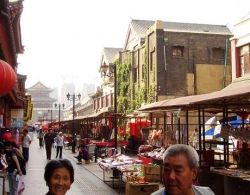
Tianjin
This one does not get as much attention as the previous two, but if you look into it, it holds its own.
Now so large (over 10 million) that it has been raised to provincial level, along with Beijing, Shanghai and Chonqing. It was the opening of the Grand Canal of China during the short-lived Sui dynasty (581-618) that first made the place. The next big event came 900 years later. In 1404, the emperor changed the name of the city from Zhigu to Tianjin (Heaven Ford) to commemorate the fact that while on campaign to defeat his nephew and gain the Mandate of Heaven for himself, he had crossed the Hai He (He = River) at this point.
The city did not have a good 19th century. The Second Opium War featured an attack by western powers on the forts which guarded the city's port, the net result being the forcing open of Tianjin to western trade and the creation of a concessionary extraterritorial zone. That later led to a mob burning down a Christian church. In 1900, the Boxers seized control of Tianjin and laid siege to the foreign concession. The 20th century saw Tianjin as the site of important events in the Anti-Japanese War, so at least in its first half was not a good century either.
Some books and websites recommend starting with a stroll along the river, viewing from afar the extreme mix of architectural style, while wondering through gardens and parks. But really the way to see Tianjin is to jump right in to the modern day city and visit the downtown Guwan Shichang, a lively antiques (mainly) market that exemplifies the city's essence as a place where trades are made. Guwenhua Jie (Ancient Culture Street) is another, more refined antiques area further out. "Antique" here means late Qing dynasty when you are speaking of the buildings. The street does, however, include the city's oldest structure (discounting reconstructions), Tianhou Temple, dating from 1325, and displaying Ming and Yuan artwork. A block away is the Confucius Temple, a pretty setting.
Shuishang Gongyuan, or Water Park, is also pretty and is the city's largest park. It features three lakes where rowboats can be rented. East lake contains a dozen islets connected by small bridges and dotted with various towers and pavilions. It is standard in these settings to have an amusement area for kids, and this Water Park is no exception.
Should an interest in history bubble up at this point, there's the Shijia Dayuan or Shi Family Mansion, built in 1875. It is the usual ostentatious mansion of a robber baron, with a dozen courtyards, a grand hall, an opera tower, and a Buddhist shrine. The Yangliuqing Museum is on the grounds. Another history site is the Boxer Rebellion Museum, educating tourists on the important role Tianjin played. Also the Zhou Enlai and Deng Yingchao Memorial Hall, a very large museum dedicated mostly to the intimate side of the relationship between Zhou and his wife, one of the founding couples of the CCP, who met here in Tianjin.
Outside the urban area, but within the Tianjin municipality, there are a number of interesting sights. Huangyaguan Great Wall is several hours away. Crowds are much smaller than those near Beijing at this section where the inclines are very steep. There is also the site of the Dagukou Forts, one of which has been preserved, on the Bohai Sea. Panshan National Park is actually closer to Beijing than to the urban area of Tianjin. It is famous for its scenery and the imperial poems praising that scenery.
Your last night in the city might include a visit to the observation deck of the TV Tower for an impressive overview.
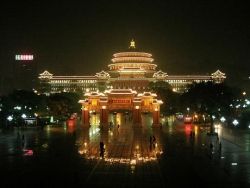
Chongqing
For a brief period in 2012, Chongqing became the center of the world's attention in matters Chinese -- more about that below.
Odd as it may seem, in a nation with thousands of years of history before the New World was even discovered, a good starting point in Chongqing is the former home of an American.
Not just any American, but General Joseph Stilwell. Just prior to World War II, Stilwell was recognized as the top corps commander in the Army and was initially selected to plan and command the Allied invasion of North Africa. However, a senior officer was needed in China to keep that country in the war, and Stilwell was selected -- over his personal objections -- by his old friend General Marshall, partly because of his facility with languages. Stilwell had served in China way back when the emperor fell and a republic rose. He'd learned Chinese.
Stilwell, however, proved to have a stormy relationship with Chiang Kai-shek. The basic conflict was over Lend-Lease supplies, which Chiang was more interested in hording for use in his fight against Mao than in using to prosecute the war against the Japanese. "Vinegar Joe" did not take well to this.
Stilwell had his headquarters in Chongqing (then Chungking), which Chiang had made China's capital after the Japanese had driven him out of Nanjing (then Nanking). Chiang ultimately maneuvered Stilwell out of China in 1944. But the house that Stilwell used still remains, and there is a museum in it that contains many interesting things, well curated, both personal and official. There are also videos and other materials explaining the significance of the Burma Road and the Flying Tigers to the war effort. There is nothing quite like this outside of Chongqing.
For contrast, visit Huajia Zhi Cun, an artists' village of cottages overlooking the Jialing River. Each artist has a small studio, and you can roam around and visit the ones you like. Most people visit this village on their way to or from the Three Gorges and its dam. Huajia Zhi Cun is called "Artists' Village." Another place to visit is Ci Qi Kou, "Porcelain Village".
Back in the city is a beautiful place with an ugly story, Baigong Guan/Geleshan. A local warlord's retreat, it was used by the infamous Dai Li, Chiang Kai-shek's chief of secret police and spymaster, as a prison. After Pearl Harbor, the Sino-American Cooperation Organization, a US-sponsored spy agency which trained agents for the Guomindang, housed its personnel here. A prison again at the end of the war, it was famously the place where the Guomindang slaughtered several hundred Communists and dissidents in the years before the retreat to Taiwan in 1949.
This is perhaps the momet to bring into this account the year 2012 and the deposed Party Secretary of Chongqing, Bo Xilai. Splashed all over the front pages of western media, in part because his wife was accused of murdering a Brit bizman, in part because wife and husband exported hundreds of millions of dollars to the West, and in part because his favoring of Maoist revival song sessions, large state-owned corporations, and bread (actually, apartments) for the poor contradicted the reformist central leadership which wanted to look more capitalist when it appears at meetings of the WTO.
The province-level city's number 1, once riding so high in this heartland jurisdiction, is now history and is likely never to see the light of day again.
Not that many people come to Chongqing to see Chongqing. Most come on a cruise which includes the Three Gorges area, a cruise which nowadays includes the dam.
The Chongqing area grew so large, now over 31 million -- that's correct, 31 million, if you include the area surrounding the urban area but still within Chongqing's jurisdiction -- that the national government was eventually forced to take it out of Sichuan Province and make it a "provincial-level city" like Beijing, Shanghai, and Tianjin. That means it reports directly to the central government and has the administrative structure of a province. The boundaries of this new entity are substantially larger than those of the other three, and much rural land is included.
Chongqing is one of China's "Three Hot Furnaces of the Yangzi," so you might want to avoid visiting during the height of the summer.
Part of a series
Pictures, pictures, pictures
Series within series, actually. Food & Cooking, for example, then -- within that -- series on vegetables, fruits, seafood, meat, etc. Books, too. Ideas, too. Travel, too. Click on "featured lenses" at the top of the right-hand column, under my profile, for the complete list. Key virtues:. pictures, clear step-by-step text. Delicious -- whether foods or ideas! All items in all of the series can be found, organized by floor, at Lee White's Department Store. Happy shopping! -- everything is for free!
